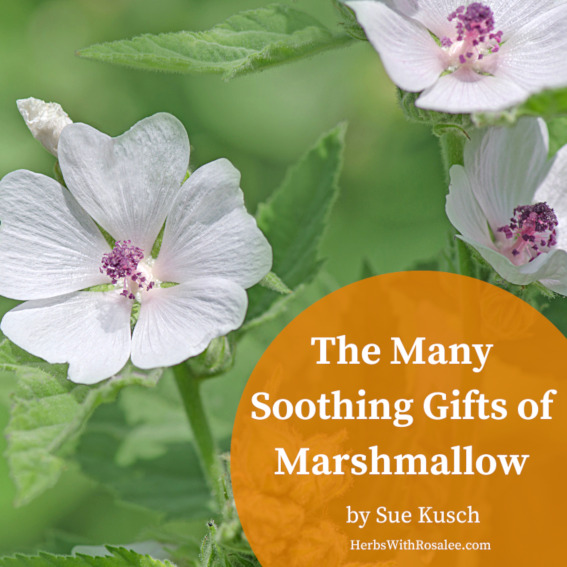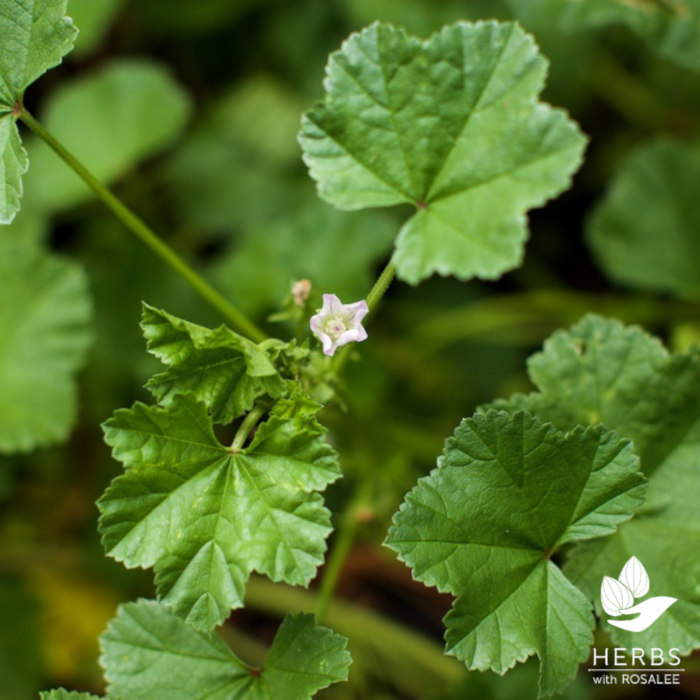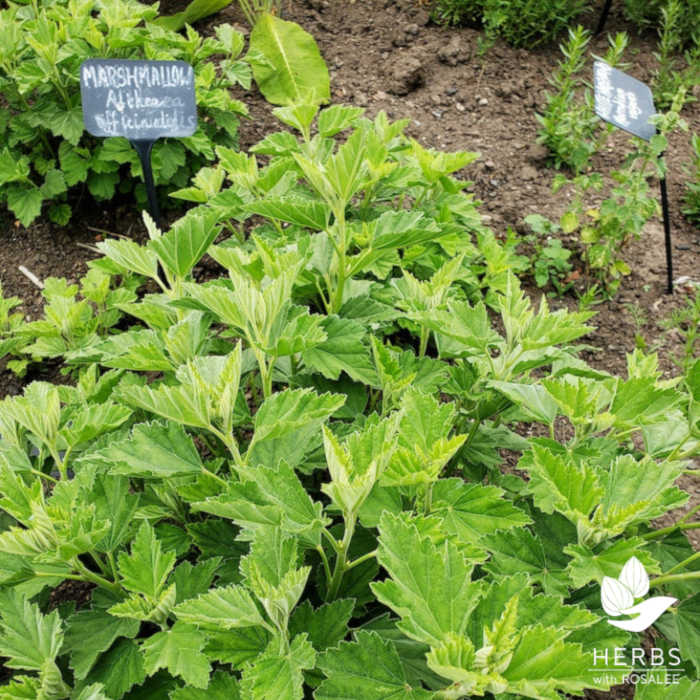Get weekly tips, recipes, and my Herbal Jumpstart e-course! Sign up for free today.

Marshmallow
Share this! |
|
I have to thank Martha Stewart for introducing me to the marshmallow herb some fifteen or more years ago. Like many surprised readers of her magazine, I learned that the Ancient Egyptians cooked the sweet root of a plant (Althaea officinalis) that grew in nearby marshy areas with honey until it thickened. The mixture was then strained and made into little candies, a delicacy available only to gods and royalty.
Martha did not offer a historical recipe: corn syrup, gelatin, and refined sugar made up her recipe. That year I suspect millions of people tasted a homemade marshmallow. I never made her recipe because I don’t care for overly sweet and sticky concoctions.
Several years later Rosalee offered a new recipe on Marshmallow Root Marshmallows - that are pink, of course! I now make one batch in the wintery and cold month of January and enjoy them in warming mugs of hot chocolate. This year, I am thinking about hosting a small winter solstice get-together and may explore peppermint or elderberry marshmallows to top my spiked hot chocolate and spicy chai tea. Herb-infused creations have unlimited opportunities.
Another Mallow
As a gardener I knew about common mallow (Malva neglecta): for years, I regularly yanked it out of my garden beds. I now let it grow wherever it pleases as the common mallow has similar healing properties as marshmallow.
This past summer, a gardener-friend visited my herb garden for the first time and her automatic reflex to pluck weeds kicked in when she saw mallow wildly growing in and around my herb beds. I stopped her, explaining that, like other members of the Malva family, the leaves, flowers, roots, and seeds were both medicinal and edible. While she found that interesting, I could tell her addiction to weed-free garden beds really wanted to pull the mallow!
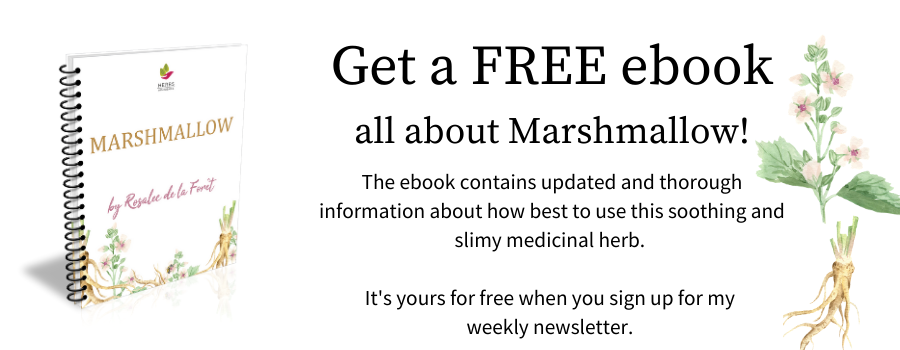
The Best Herbal Adjective: Mucilaginous
Because of its abundance of mucilage, marshmallow is considered one of the best demulcent herbs by herbalists. A demulcent is a substance with mucilaginous properties that is used to relieve inflammation and irritation. I love the word mucilaginous far more than the typical adjectives of slimy and gooey, which immediately create an undesirable image in my mind (perhaps too many gory horror movies in my youth).
In my early years of herbal learning, I learned about an herb’s qualities and tastes by drinking infusions of it. It’s confession time: for the most part, I am a picky eater because I have issues with texture: slimy, overcooked, canned spinach induces my gag reflex. While cold-infused marshmallow tea is not nearly as slimy as canned spinach, I don’t go out of my way to drink it. But I do keep the dried root in my apothecary because of its considerable healing properties.
Marshmallow’s energetics are cooling and moistening and are specifically used on hot, inflamed and irritated tissues. Taken internally it is excellent for soothing sore throats and dry, hacking coughs.
In a recent clinical trial of children with intermittent asthma, an herbal blend that included marshmallow was given at the onset of a viral respiratory tract infection, resulting in a reduction of both the severity of coughs and the number of night awakenings because of severe coughing.1
Marshmallow works wonders throughout the digestive system, from inflamed gums to heartburn to ulcers to constipation.
Externally, marshmallow is especially effective on inflamed skin conditions like wounds, burns, ulcers and dry, itchy skin. Marshmallow also has drawing abilities and is used in ointments for abscesses and boils.2 Marshmallow can also provide relief for inflammatory skin disorders but does not generally address the root cause of some of these conditions.3
Marshmallow for Menopause and Dryness
Many women notice distinct changes in their skin and hair as they transition through the falling estrogen levels of menopause. Reduced estrogen causes oil glands in the skin to shrink, resulting in drier skin and hair. Another menopause complaint for many women is vaginal dryness (aka vaginal atrophy), which can lead to painful intercourse. Lubricants and moisturizers are the first treatments recommended for this seldom-discussed and under-diagnosed condition.4 Marshmallow’s cooling and moistening properties make it an ideal ally for older women living with drier body parts.
Dry skin affects many people because of advanced age, living in cold or dry climates, overexposure to water, wind and sun, indoor heating, and the use of harsh detergents and soaps. For me, the seasonal transition from autumn to winter is the driest time of year for my skin: my legs and arms itch, my facial skin feels tight and my lips become chapped.
In Dina Falconi’s book, Earthly Bodies & Heavenly Hair: Natural and Healthy Personal Care for Every Body, marshmallow is recommended for a long list of homemade moistening body care products:
- Shampoo
- Hair rinse
- Body lotion
- Hand & foot soaks
- Shaving lotion
- Nipple cream
- Wound wash
- Baby powder
I try to make most of my own body care products to avoid the many synthetic chemicals used in commercially made ones. One of the easiest items to make is lip balm, and is a great way to explore a variety of demulcent herbs, essential oils for flavor and healing, and different carrier oils and butters. Unique lip balms also make great gifts, especially in the winter months.
Marshmallow Recipe: Healing Marshmallow Root & Calendula Lip Balm
First, you will need to infuse dried marshmallow root and calendula into your preferred carrier oils. You can combine the two into one oil infusion but I generally prefer to infuse each herb separately. Mountain Rose Herbs offers step-by-step directions. I use the quick method.
Ingredients
- 2 Tablespoons marshmallow root infused oil
- 2 Tablespoons calendula flower infused oil
- 2 Tablespoons coconut oil
- 1 Tablespoon cocoa or shea butter
- 3 Tablespoons beeswax pastilles
Directions
Have lip balm containers cleaned and ready for pouring. I prefer small tins and small apothecary jars to plastic lip balm tubes. If you prefer tubes and plan to make a large number of lip balms, you may want to invest in a tube filling kit to make filling easier.
In a double boiler set-up over medium low heat, add coconut oil and butter and melt to liquid. Add infused oils and beeswax, and heat until completely melted. Remove from heat and pour into a lipped container that makes pouring easy. Pour into containers and allow to cool and harden. Place lids on, label and store in a cool, dark place. To avoid a melted mess, remember to keep your balm away from heat.
Citations for Marshmallow
1. “Short-Course Administration of a Traditional Herbal ...” Accessed October 16, 2019. http://ajp.mums.ac.ir/article_11678_6a8b00248234cdbbc0a31e4de77b1ccd.pdf.
2. Hoffmann, David. Herbs for Healthy Aging: Natural Prescriptions for Vibrant Health. Rochester, VT: Healing Arts Press, 2014.
3. “Medicinal Plants Used in Treatment of Inflammatory Skin ...” Accessed October 17, 2019. https://www.ncbi.nlm.nih.gov/pmc/articles/PMC3834722/.
4. Alvisi, Stefania, Gava, Giulia, Isabella, Giacomelli, Giulia, et al. “Vaginal Health in Menopausal Women.” MDPI. Multidisciplinary Digital Publishing Institute, September 20, 2019. https://www.mdpi.com/1648-9144/55/10/615.
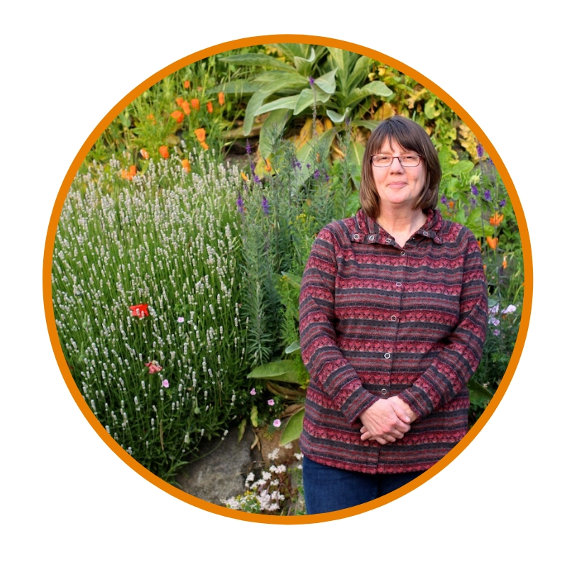
Sue Kusch, a former community college instructor and academic advisor, incorporates her experiential wisdom, expertise and science-based research garnered from her three decades of growing vegetables, fruit and herbs into her educational writing about plants and how people use them. In addition to her BA in Social Sciences and Masters in Education, she completed the Master Gardener training in 2011 and two permaculture courses in 2001 and 2014. She has studied medicinal and nutritional uses of herbs, including studies at Herbmentor and East West School of Planetary Herbology, since 1997. An avid reader, lover of historical and folkloric information, and a promising storyteller, Sue writes about the intersection of plants and people.
